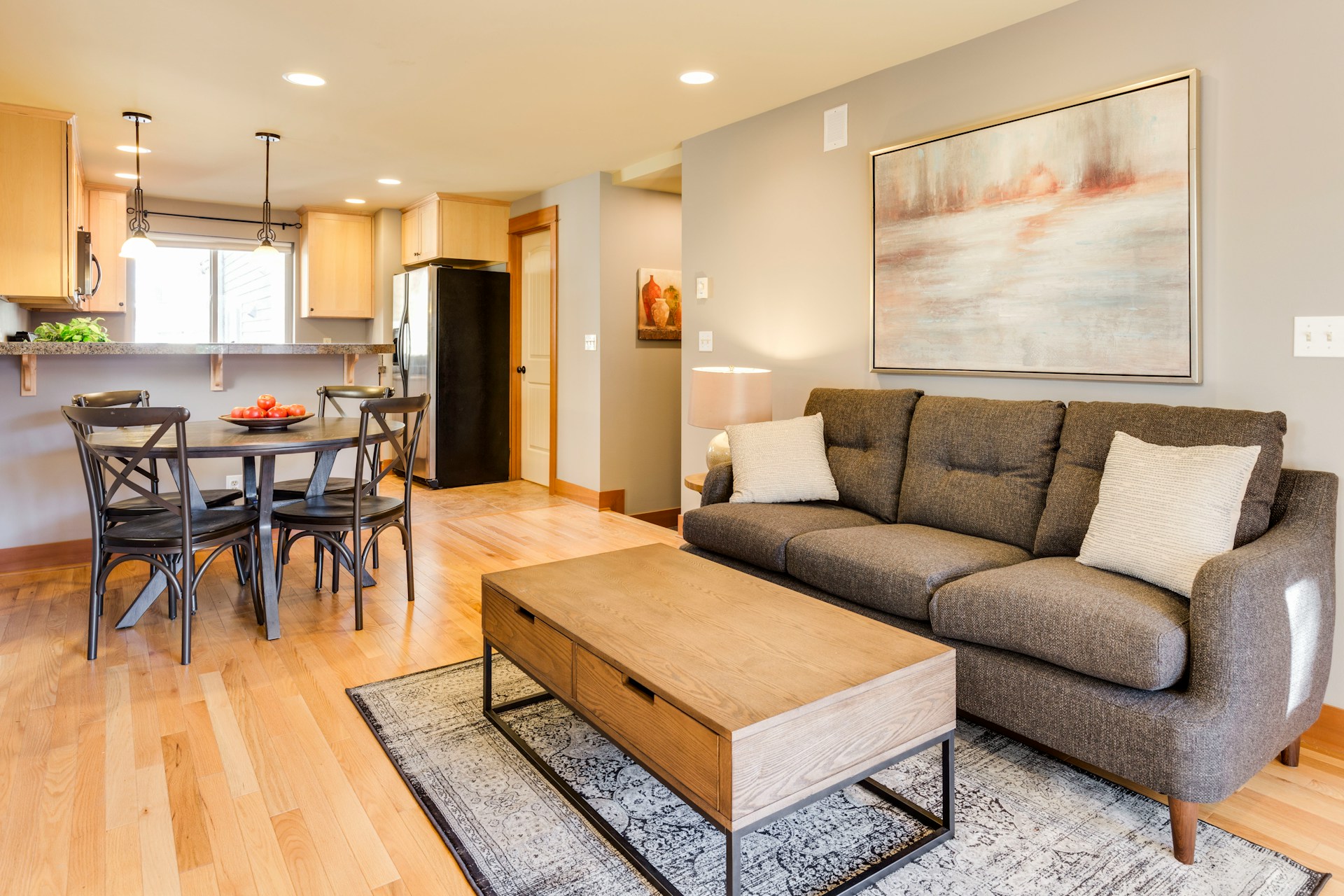A modest house can still shine—no major overhauls required. Many buyers prioritize affordability, commute, and how the home feels in daily life over a laundry list of upgrades. If your home needs work and you’re not ready (or don’t want) to invest heavily, you can sell confidently by focusing on presentation, transparency, and smart trade-offs. Here’s how.
1) Lean Into the Advantages of Smaller Footprints
Smaller homes come with natural perks:
- Lower ongoing costs: utility bills, heating/cooling, cleaning, upkeep.
- Manageability: less maintenance and cleaning translates into more free time.
- Cozy, efficient layouts: if spatial flow is good, you can emphasize that there’s no wasted square footage.
Also, location matters a lot for buyers trading size. If your small house is close to work, transit, grocery stores, parks, or schools, that’s a huge plus. Positioning your house as “efficient + well-situated” can help buyers imagine a lifestyle with fewer compromises.
2) Sell What You Have, Not What You Wish It Was
Even when selling as-is, you’re selling something. Bring forward what’s strong, or usable, and be honest about what isn’t. Buyers are often more comfortable taking on small cosmetic work than large hidden surprises.
Some key strategies:
- Disclosures: Be up-front about known issues. Not doing so can hurt negotiations or even lead to legal issues. Sources like HomeLight emphasize that as-is doesn’t eliminate the need for honesty.
- Pre-listing inspection (optional but helpful): Having an inspection done before listing gives you a clearer picture of what buyers will find. It can help you set the right price, avoid last-minute unpleasant surprises, and gives credibility.
3) Use Smart, Low-Cost Refreshes that Make a Big Impact
Rather than a full remodel, look for small, affordable touches that yield strong returns.
Here are additions to the refresh ideas from your draft, drawn from experts:
- Upgrade hardware & fixtures: New cabinet pulls, doorknobs, showerheads, or faucets in modern finishes can update the look for relatively little cost.
- Front door & entry touches: Repaint or simply refresh the front door. Clean or update the entryway light, hardware, or house numbers. First impressions count.
- Clean or refresh tile grout: It’s often overlooked, but clean grout makes bathrooms/kitchens look well-maintained. Also regrouting where needed.
- Lighting upgrades: Replace burnt-out bulbs, swap in brighter LED bulbs, clean light fixtures. Lighting has huge visual impact.
- Neutral paint: A fresh, neutral coat in key areas—main living, entry, perhaps hallways—helps the home feel clean and move-in ready. Bold colors or wallpapers often appeal to fewer people.
4) Stage Strategically: Make the Best Use of What You Have
Staging doesn’t have to be expensive or professional (though that does have it’s value). Small adjustments can shift perception dramatically.
- Declutter and depersonalize: Remove personal photos, reduce visible clutter, clear off flat surfaces.
- Maximize natural light: Open blinds/curtains, clean the windows, remove heavy drapes. Bright spaces feel larger.
- Use mirrors to reflect light and expand sight lines.
- Define zones: Even inside a single room, arrangements can suggest purposes (living, dining, work) to help buyers see flexibility. Rugs, lighting, furniture placement help.
- Virtual staging is also an option. If you have good photos, adding virtual furniture or decor can help make rooms look more inviting online, at a fraction of the real cost. But be cautious: what you show should reasonably reflect what’s in the house on tour.
5) Curb Appeal: Set the Tone Before Buyers Step Inside
The exterior is the first thing people see—don’t let it undermine your interior improvements.
- Trim/upkeep landscaping: mow lawn, remove weeds, edge walkways.
- Clean up the path to the door: sweep sidewalks, repair cracked walkways if possible, make entrance welcoming.
- Freshen up the facade: power wash siding or brick, clean gutters, paint or clean the front door or porch fixtures.
- Small decorative touches: potted plants, new or clean door mat, updated house numbers.
6) Price Smartly & Be Transparent
Pricing is perhaps the single most important lever when selling as-is.
- Adjust for condition: Look at comps (recent nearby similar homes), then reduce based on known condition defects or deferred maintenance. Buyers expect a discount when they assume they’ll need to invest.
- Be explicit in your listing that the house is being sold as-is. That helps set expectations.
- Provide good documentation where you can: receipts, inspection reports, manuals, permit history. Even small items build trust.
- Offer options: If repayment, quick closing, or minor seller credits are feasible, they might grease the deal without major investment from you.
7) Focus On Buyer Psychology: What They Fear & What They Value
Buyers often fear hidden cost, inspections that uncover serious issues, and surprises. You can ease those concerns.
- Highlight safety and functionality where you can — working heat/cooling, absence of leaks, functioning wiring, etc. Major safety or structural issues may need disclosure or repair depending on local laws.
- Make the home feel move-in ready even if it isn’t perfect: clean carpets, fix squeaky doors, patch obvious holes. These don’t usually cost much but reassure buyers.
- Avoid design extremes or dated styles that require a lot of conversion. Subdued, modern neutral styles generally have wider appeal. Bright colors, unusual wallpaper, bold fixtures can turn off some buyers.
8) Timing and Marketing Strategy
- Work with an agent who understands as-is sales — some specialize in fixer-uppers or investors, who know how to value condition vs. repair.
- Consider off-market or investor routes if speed is more important than getting top dollar. Investors or cash buyers may take a home as-is more readily.
- Leverage high-quality photos and strong listing copy: use honest, attractive language. Emphasize positives (“bright,” “well-lit,” “efficient,” “location,” etc.) without hiding flaws—but don’t lead with the negatives either.
9) Reframe the “Small Means Sacrifice” Perception
Some buyers may assume that a smaller home equals giving something up. Your job is to flip that narrative and highlight the lifestyle perks:
- Easier upkeep: Fewer rooms to clean and repair means more weekends free for family or hobbies.
- Energy efficiency: Smaller spaces typically cost less to heat and cool, making utility bills gentler month after month.
- Intentional living: A thoughtful layout can make compact spaces feel purposeful, with no wasted formal rooms gathering dust.
- Financial flexibility: Lower housing costs can free up cash for travel, savings, or experiences buyers value more than extra square footage.
- Closer connections: Cozy homes often feel warm and inviting, encouraging togetherness rather than spreading people out.
Frame size as a benefit, not a drawback. You’re not selling fewer square feet; you’re selling simplicity, savings, and a lifestyle many modern buyers actively seek.
Selling a small house as-is doesn’t mean settling. With clear presentation, a few low-cost refreshes, honest pricing, and upfront details, you can attract buyers who value simplicity, charm, and efficiency—letting the home’s strengths speak for themselves.




